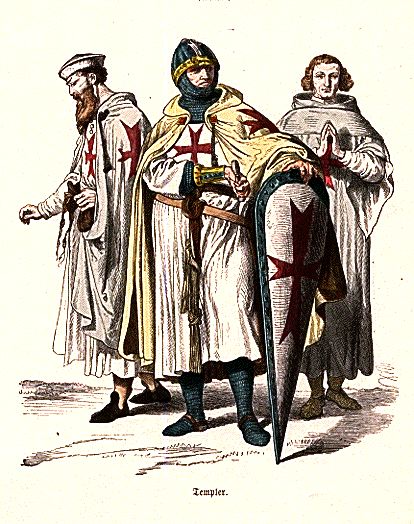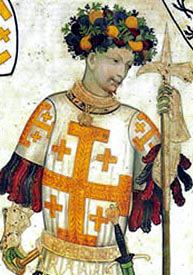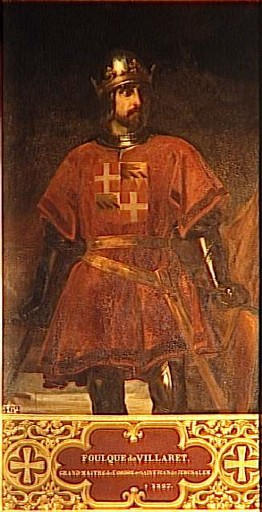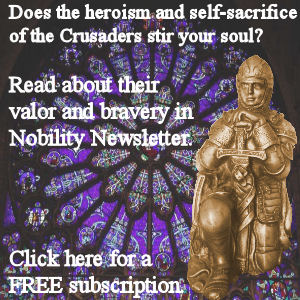From the bosom of a hospital consecrated to the service of pilgrims and the poor, issued heroes armed against the infidels—the humanity and the bravery of the knights of St. John were equally conspicuous. Whilst some grew old in the offices of hospitality, others went forth to combat with the enemies of the faith. After the example of these pious knights, several men of gentle birth met near the place where the temple of Solomon had stood, and took an oath to protect and defend the pilgrims who repaired to Jerusalem. Their union gave birth to the order of the Templars, which, from its origin, was approved by a council, and owed its statutes to St. Bernard.
These two orders were governed by the same principle that had given birth to the crusade, the union of the military spirit and the religious spirit. Retired from the world, they had no other country but Jerusalem, no other family but that of Jesus Christ. Wealth, evils, and dangers were all in common amongst them; one will, one spirit, directed all their actions and all their thoughts; all were united in one house, which appeared to be inhabited but by one man. They lived in great austerity, and the severer their discipline became, the stronger appeared the bonds by which it enchained their hearts and their wills. Arms formed their only decoration; precious ornaments were never seen in their houses or churches; but lances, bucklers, swords, and standards taken from the infidels abounded. At the cry of battle, says St. Bernard, they armed themselves with faith within and with steel without; they feared neither the number nor the fury of the barbarians, they were proud to conquer, happy to die for Jesus Christ, and believed that every victory came from God.
Religion had sanctified the perils and the violences of war. Every monastery of Palestine was a fortress, in which the din of arms was mingled with the voice of prayer. Humble cenobites sought glory in fight; the canons, instituted by Godfrey to pray near the holy tomb, after the example of the Hospitallers and the Templars, had clothed themselves with the casque and the cuirass, and, under the name of the Knights of the Holy Sepulchre, distinguished themselves amongst the soldiers of Christ.
Joseph François Michaud, History of the Crusades, trans. W. Robson (New York: Redfied, 1853), 1:306–308.
Short Stories on Honor, Chivalry, and the World of Nobility—no. 848









